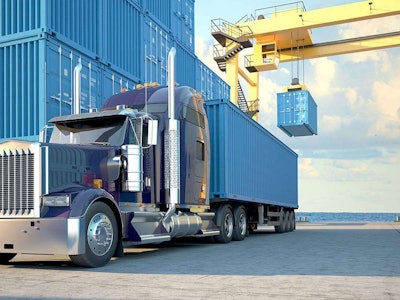 The employee vs. contractor debate has been prominent for drayage carriers at West Coast ports in recent years.
The employee vs. contractor debate has been prominent for drayage carriers at West Coast ports in recent years.A federal advisory committee says U.S. ports could increase efficiency by implementing on-demand trucking systems, improving chassis supply and decreasing truck turn times.
This month, the Advisory Committee on Supply Chain Competitiveness presented ways to cut congestion at seaports and connecting inland infrastructure to Commerce Secretary Penny Pritzker. Formed in 2011, up to 45 private sector stakeholders and additional ex officio federal agency representatives serve on the committee.
The ACSCC advocated an on-demand system that would let truckers pull containers off stacks on a first-available basis for delivery, instead of waiting for a designated container. This plan would not preclude the need for shippers to pull individual containers based on priority.
The committee noted the chassis shortage keeps containers from leaving the port, overwhelming terminal space and leading to delay charges. The Federal Maritime commission and other U.S. agencies should facilitate stakeholder agreements to create and operate gray or port-wide chassis pools.
These gray pools could adjust capacity and usage from the cargo volume data, which ocean carriers could obtain from professional associations or third-party services. Additionally, the committee suggested “industry partners,” provide initiative and assistance for drayage firms to buy or lease chassis.
The ACSCC acknowledges federal entities have limited ability to directly resolve congestion at ports and inland links, which nearly always are owned by private entities or state, local and municipal governments. However, federal agencies could grant ports, trucking associations and other stakeholders authority to create port groups to discuss improving productivity.
Other recommendations include that ports and terminals use integrated scheduling programs and appointment systems at major terminals to improve data sharing, forecasting and cargo flow.









